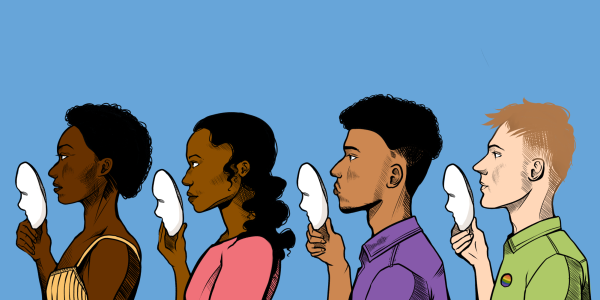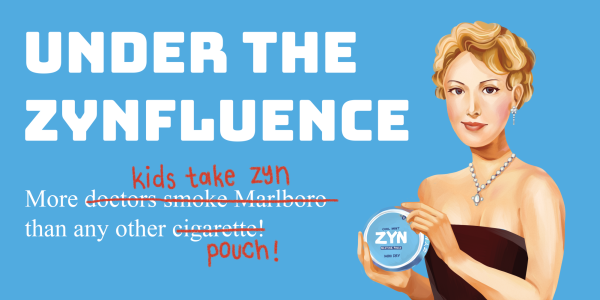Taking Action
An illustration depicts a portrait of the founder of Students for Fair Admissions Edward Blum.
August 26, 2022
A lawsuit against the affirmative action policies at Harvard University and The University of North Carolina at Chapell Hill aims to eliminate the consideration of race, gender and ethnicity in admissions. This case, which was brought forth by Edward Blum, will go to the Supreme Court on Oct 31 of this year. Blum’s organization, Students for Fair Admissions (SFFA), said it aims to dismantle racial classification in college selections under the pretext that this violates the equal protection clause in the Civil Rights Act.
Blum, a conservative political strategist, argued that affirmative action prevents Asian Americans and white people from being admitted to universities and unfairly gives an advantage to other minorities in order to meet diversity quotas.
Head of Diversity, Equity and Inclusion and Associate Director of Admissions Janine Jones said Blum’s case questioned whether diversity should be integrated into education.
“What they are challenging in my mind is diversity as a goal,” Jones said. “Most of the schools that are looking to diversify their communities are doing it because research tells us that educational institutions that are diverse, produce stronger citizens, and that learning is improved and critical thinking skills are improved by having diverse environments. I think what’s at the heart of [these cases], especially [in the case of] Edward Blum, I think he’s using people for this lawsuit and for his distinct purpose of keeping the status quo. He is trying to hang his hat and his legal argument on affirmative action, which I think is misplaced.”
The precedent case for affirmative action, Grutter v. Bollinger (2003), upheld the use of racial preference in University of Michigan admissions to promote a diverse student body, according to Supreme Court Justice Sandra Day O’Connor’s majority opinion. This case further established affirmative action as a standard in the college admissions process from the Civil Rights Act of 1964.
Community members reflect on the existence of affirmative action.
Black Leadership Awareness and Culture Club (BLACC) Leader Hannah Messaye ’23 said discussions of affirmative action often neglect varying amounts of privilege and unique life experiences.
“Taking away affirmative action relies on the assumption that everyone’s experiences level out,” Messaye said. “It relies on the idea that everyone is starting from the same place. That is not true and harmful because if you start the race three steps behind, you have to run harder in order to catch up.”
Jones and Messaye both said the fight for affirmative action is an issue of equality versus equity. According to an article in the Milken Institute School of Public Health, equality gives every person equal opportunities and support, whereas equity acknowledges that each person has different circumstances and allocates the exact resources and opportunities needed to reach an equal outcome. Educational equality among all students will not correlate to equal outcomes because of the inevitable differences in circumstances; affirmative action embraces an equitable approach by offering different amounts of support needed for a positive outcome, according to an article in the United Way of National Capital Area.
Though he said he supports the goal of affirmative action, Luke Madden ’24 said he believes affirmative action fails to select the most qualified applicants.
“There are some cases where [affirmative action] clearly fails in its duty to provide equal opportunity to everyone going to college,” Madden said. “[It restricts] opportunities from qualified candidates. While I agree that colleges should make sure that everyone is on equal footing when it comes to what college they are able to attend, there’s a better solution that starts more at the source of these inequalities versus affirmative action.”
Madden said he recognizes the inequities at the root of racial disparities and said pursuing welfare policies would be the best solution.
“Affirmative action was meant to solve the inequality that exists within college admissions,” Madden said. “The source of that inequality is mainly [the] lack of access to resources. If we work on fixing that problem of access to resources, we will not need such a heavy-handed approach such as affirmative action to compensate for the inequality that currently exists in our system.”
Students discuss the impact the Model Minority Myth has on college admissions.
Asian American Students in Action (ASiA) Leader Julia Im ’23 said she is upset by the hypocrisy in arguments about affirmative action.
“It is frustrating that people constantly try to question the race-conscious aspect of college admissions,” Im said. “A lot of sports recruitment and legacy tactics that get you into college are supposedly race-neutral, but no one ever questions the fact that they disproportionately benefit white Americans.”
Seventy percent of Asian Americans support affirmative action, according to a 2020 AAPI Data Survey in Cal Matters.
Im said stereotypes contribute to Blum’s misrepresentation of the majority of the Asian Community’s viewpoint on affirmative action.
“Edward Blum is not even Asian and is trying to speak on behalf of the whole Asian community,” Im said. “It is really simple to assume that just because there is a race-conscious aspect to college admissions that the whole thing is rigged. That brushes over a lot of structural inequalities that affect Asian Americans like the model minority myth, etc.”
According to an article by Cal Matters, the model minority myth is based on the stereotype that Asians tend to be academic and quiet, which generally labels them a group that strives to achieve success. Im said Blum is using broad stereotypes and generalizations about Asian people to perpetuate racial inequality.
“He is trying to use them to justify banning affirmative action, which generally benefits a lot of other people of color more,” Im said. “That is a tactic that is often used to justify racial inequality in the past, which is the nature of the model minority myth.”
Students assert the comparative nature of Blum’s argument.
Messaye said the model minority myth compares different minority groups and stresses the idea that if one group can be successful, then the rest can be.
“It is kind of an ‘If they can do it, you can do it mindset,’” Messaye said. “ People have this idea that if Asians can get [into] these really good colleges, Black people and Latino people should be able to get into good colleges too.”
Alex Lee ’24 said that Blum’s arguments turn minority ethnicities against each other.
“People like Edward Blum are saying it is Asians versus Blacks because of affirmative action,” Lee said. “No it is not. The reason that you think it is that is the rest of the spots have been filled up by powerful, wealthy white people who have corrupted the college admissions process.”
A demographics poll by the Harvard Crimson found that 46% of the incoming class of 2022 identifies as white, 18.1% as Asian, 14.3% as multiracial, 10.7% as Black or African American, 6.5% as Hispanic or Latio, 3.8% as South Asian, 0.6% as American Indian or Alaska Native and 0.1% as Pacific Islander.
Lee said he believes college administrators make decisions about candidates from minority groups by comparing them exclusively against each other. He said he attributes the high levels of selectivity among minorities to the large percentage of privileged people being admitted to college.
“People believe that affirmative action means that certain people who don’t deserve it get in before people who do deserve it,” Lee said. “The reason that tradeoff exists in the first place is because these schools are selecting half their grades [with] people who are white, people who are wealthy, people whose parents have donated to the school and people who have double legacies,” Lee said. “When that constitutes 50% of [the] graduating class, that’s the problem. That’s the reason why people at the bottom can not get in.”
As the court hearing date comes closer, Jones said that people should continue the discussion to combat misinformation about the subject.
“People use the term affirmative action very broadly,” Jones said. “[People] actually use the term incorrectly as well. I think the way that we will combat this is through education. We just have to continue to have conversations about it and actually understand what it means.”









































